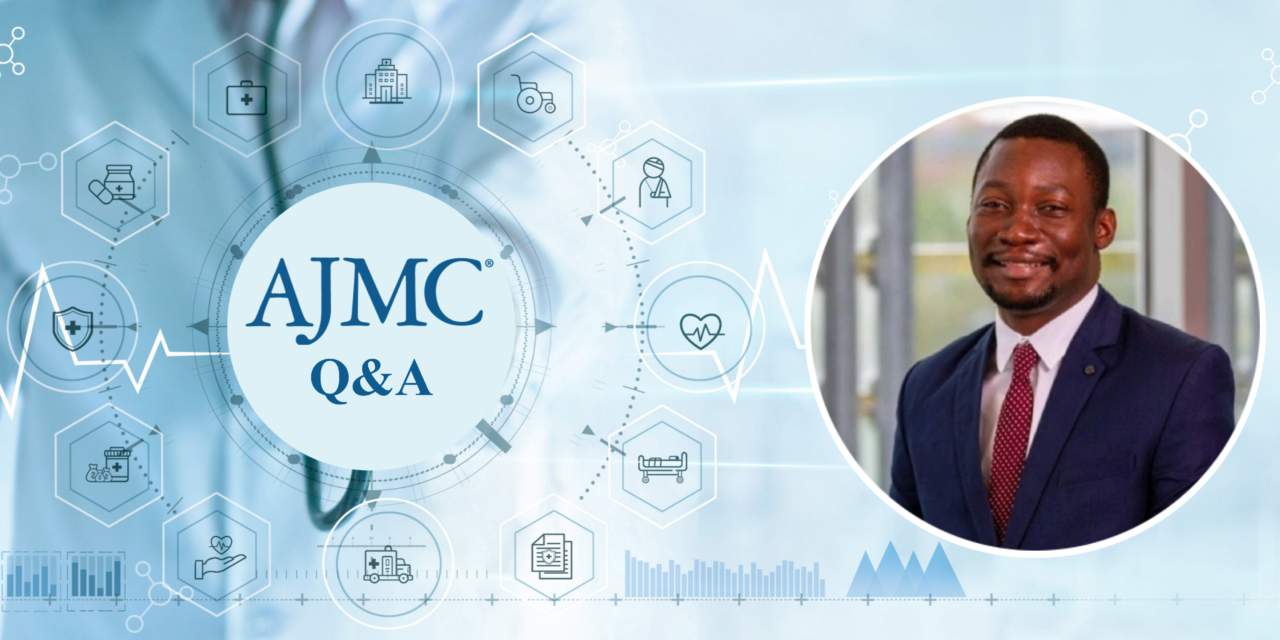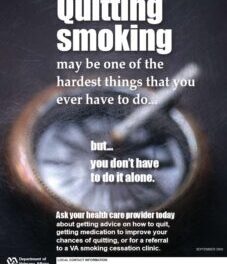
Post medical school, Emmanuel Nazaire Essam, MD, MPH, set to work caring for populations living in rural areas of his native Cameroon. HIV and AIDS were among the many health care–related challenges that these individuals faced, and these were compounded by several economic and social barriers, such as lack of adequate and reliable transportation, costs of care, and deficient health literacy.
He became not only a clinician and health care provider to people living with HIV (PLWH), but their logistics guru as well, planning strategies to increase access to HIV education, testing, and linkage to care. Driven by a desire to find strategies to close gaps in the continuum of care for people at risk or impacted by HIV, he has spent the last 6 years in the field laboring tirelessly in clinical practice, research, evaluation of health interventions, and quality improvement.
Essam is research coordinator at the Specialty Care Center of the University of Nebraska Medical Center (UNMC), and at this year’s International AIDS Conference, held July 22-26, he presented, “Medicaid Insurance Expansion and Its Association With HIV Outcomes in Nebraska, USA: An Observational Prospective Cohort Study.”
This interview has been lightly edited for clarity.
Emmanuel Nazaire Essam, MD, MPH | Image Credit: University of Nebraska Medical Center

The American Journal of Managed Care® (AJMC®): Your LinkedIn profile mentions your mission to enhance Ryan White Parts C and D services for uninsured/underinsured individuals with HIV. Could you explain what these services entail and how they improve access to care for vulnerable populations?
Essam: The Ryan White HIV/AIDS program is a key initiative in the US that provides comprehensive care and support services to individuals living with this virus. It is divided into several parts, and all of them address the significant disparities in health care access that PLWH experience. At the Specialty Care Center, we are beneficiaries of Part C, which primarily serves larger urban areas with significant HIV/AIDS burdens, and Part D, which targets specific populations with critical needs (eg, people who inject drugs, people experiencing homelessness, and racial and ethnic minorities).
Both parts have a cumulative impact on our clients, providing a broad spectrum of care and playing a vital role in addressing the disproportionate impact of HIV/AIDS on marginalized communities. This comprehensive approach has met with great success, as our clinic population’s overall health outcomes and quality of life are on par with the US national goal.
AJMC: Can you address the importance of Ryan White’s legacy in this research arena?
Essam: The Ryan White HIV/AIDS Program has been instrumental not only in providing care and support to individuals living with HIV, but also in fostering a robust research environment. By serving a large and diverse population of PLWH, the program is generating a wealth of real-world data on treatment outcomes, adherence, and the impact of various interventions. Its focus on patient care is supporting research that directly addresses the needs and priorities of PLWH, and by serving disproportionately affected populations, the program has highlighted the need for research to address disparities in HIV/AIDS outcomes.
AJMC: The Affordable Care Act (ACA) and Medicaid expansion ensured coverage for preexisting conditions, including HIV. Can you explain the significance of this legislation in increasing care access for these patients?
Essam: The ACA and Medicaid expansion have played vital roles in improving access to care for uninsured people and making it less expensive for those already enrolled. Before these legislative changes, people with preexisting conditions, such as HIV, often found it challenging or impossible to secure health insurance.
Specifically looking at PLWH, data show that expanding Medicaid eligibility in many states brought health coverage to a significant number of low-income individuals living with HIV. This was particularly crucial, as HIV disproportionately affects marginalized and economically disadvantaged populations.
With insurance coverage, people living with HIV can now access essential medical care, including antiretroviral therapy (ART), regular health check-ups for HIV and non-HIV reasons, preventive care, and mental health services—and the costs of medical care are being covered.
AJMC: Although Medicaid expansion has improved access to care, linkage to care remains elusive for some individuals. How can health care coverage be improved to reduce disparities for these individuals?
Essam: There is no one-size-fits-all solution to this issue, but most certainly, solutions must be centered around meeting individuals where they are. There are some starting points I believe can make a difference:
- Address basic needs: When individuals’ basic needs are met, they are more likely to focus on their health and seek necessary care; integrating social services with health care can address these foundational issues.
- Provide transportation and childcare: Offering transportation options can help individuals attend health care appointments, especially people who live in remote or underserved areas; similarly, providing childcare assistance can remove barriers for parents who need to access medical care but lack adequate childcare.
- Partner with community-based organizations: These organizations understand the unique needs of their communities and can provide tailored support to individuals who might otherwise fall through the cracks.
- Deploy community health workers: They can play a critical role in assisting individuals with understanding their coverage options, enrolling in Medicaid, and accessing care.
- Leverage technology: Utilizing mobile apps and online portals can simplify the enrollment processes, reduce bureaucracy, and provide ongoing support; technology can also facilitate communication between patients and providers, helping individuals stay informed about their health care options and manage their appointments and treatments.
AJMC: Could you discuss your findings presented at AIDS 2024 and what motivated you to undertake this analysis?
Essam: Since Medicaid expansion, several research studies have looked at its impact on the general population and among PLWH. Surprisingly, not all of these findings agree on whether Medicaid expansion was associated with positive outcomes. In designing our research, we aimed for our analysis to answer that question for the PLWH in Nebraska while not reducing the impact of Medicaid expansion only on their outcomes. We also looked at elements of access to care and affordability. As we know, PLWH often also are living with comorbidities—for example, heart diseases, diabetes, cancer—which all require medical attention that they can only get if they have access to care that’s affordable and of quality.
Our findings suggest that Medicaid enrollment after Medicaid expansion improved HIV viral suppression for enrollees and that health care access and affordability improved post enrollment compared with baseline.
AJMC: Your study abstract notes that HIV viral suppression rates are below national and international goals. What factors contribute to this lower rate in the state, and how do these trends compare to non–study populations inside and outside Nebraska?
Essam: According to the most recent data available, Nebraska’s rate of HIV viral suppression was 69.2% in 2022 (preliminary data), which is below the national/international goal of 95%. Despite progress in prevention and treatment modalities, barriers still exist that prevent people from accessing prevention tools, care, and treatment. Some of the key challenges to achieving viral suppression include lack of health coverage, nonadherence to ART, stigma and discrimination, poverty, and limited access to high-quality health care, such as an HIV specialist.
Similar to national trends, HIV disproportionately affects minority populations in Nebraska, as new infections are highly concentrated among men who have sex with men and racial/ethnic minorities, especially African American and Hispanics/Latino individuals, who also experience poorer outcomes higher viral loads compared with other populations.
AJMC: How important is advocacy in advancing the rights of PLHW?
Essam: Advocacy is paramount in advancing the rights of people living with HIV/AIDS. It is the driving force behind progress in this field, catalyzing change and becoming a powerful tool to address the complex challenges those affected by HIV/AIDS face. Without advocacy from Nebraskans to expand Medicaid, we can’t say for sure if we would have been here today talking about its significant impact on them.
In essence, advocacy is the voice of people living with HIV/AIDS and their support system, ensuring their needs, rights, and perspectives are heard and addressed. Without it, progress in the fight against HIV/AIDS would be significantly hindered.




